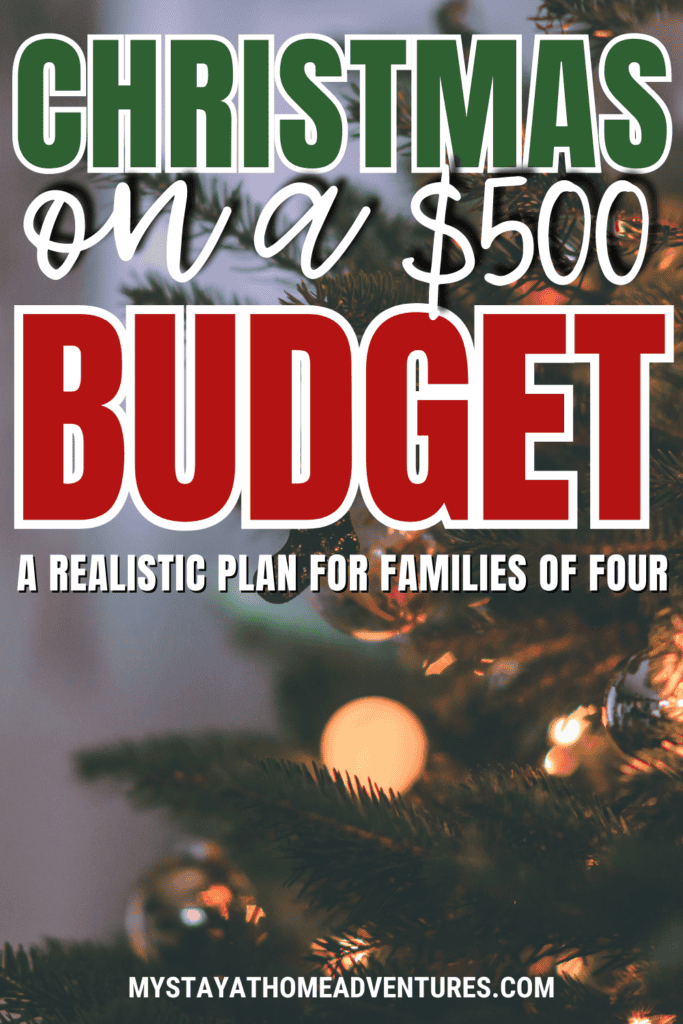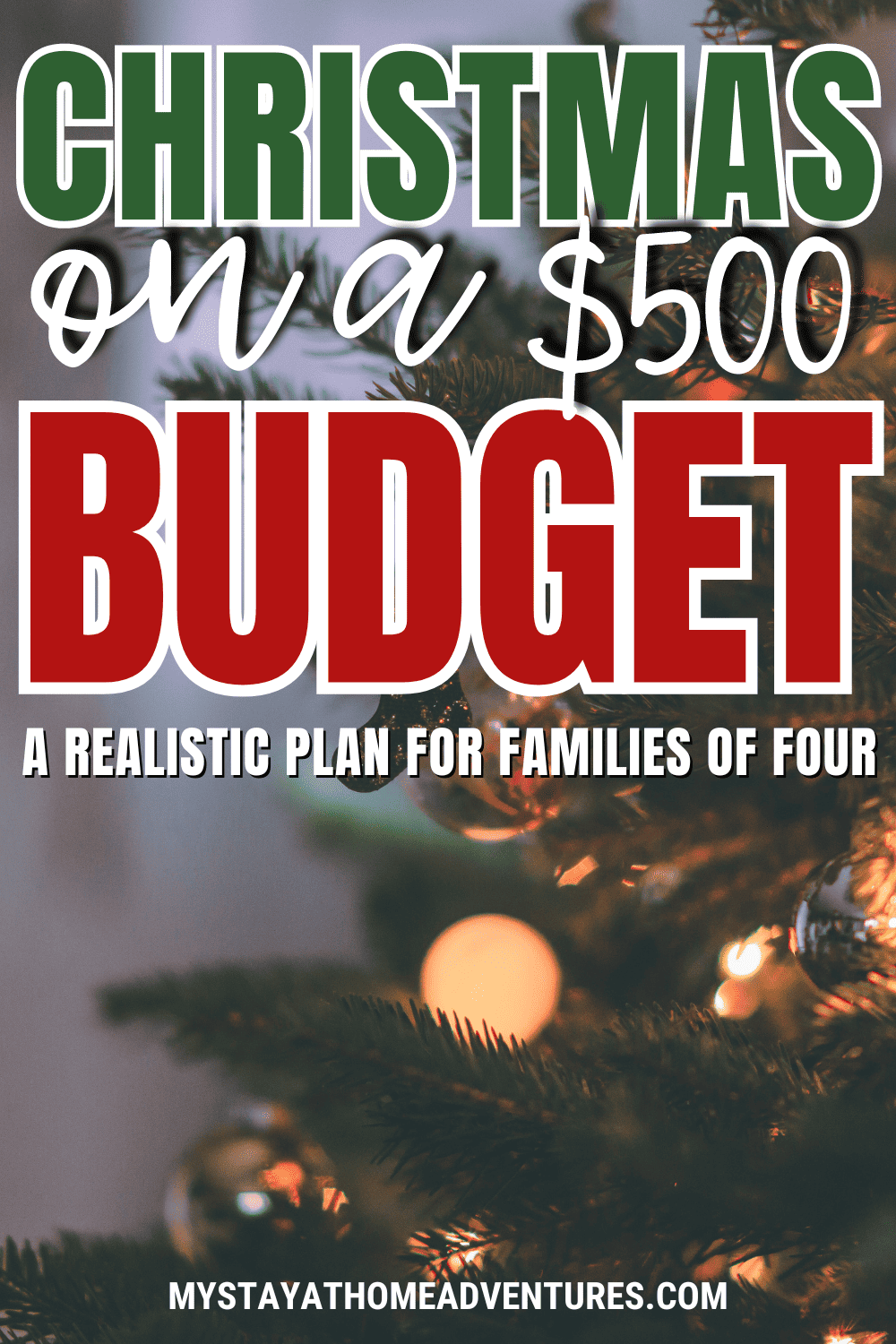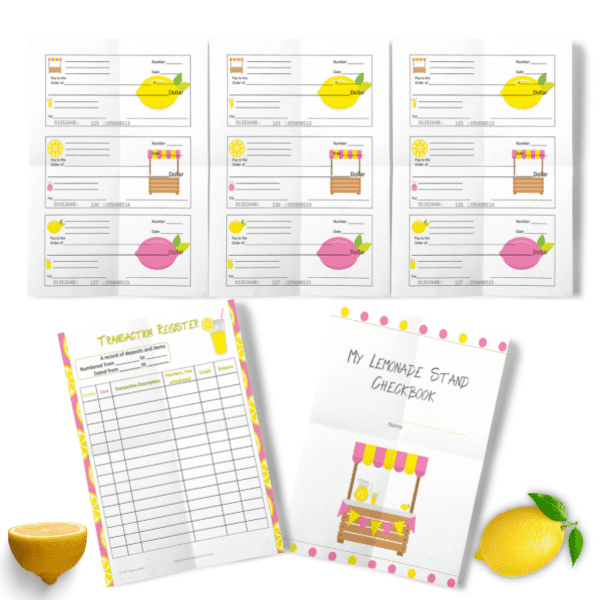Christmas on a $500 Budget: A Realistic Plan for Families of Four
This post may contain affiliate links which might earn us money. Please read my Disclosure and Privacy policies hereChristmas on a $500 budget may sound challenging, especially when the average American spent $1,652 on the holiday in 2023, up from $1,455 in 2022. The pressure to meet these spending expectations, particularly on gifts and festivities, can be overwhelming.
However, with thoughtful planning and focusing on meaningful experiences, it’s possible to have a wonderful Christmas on a $500 budget. The plan will help you allocate funds for gifts, Christmas dinner, decorations, stocking stuffers, and family activities. We’ll also cover how to handle unexpected costs and avoid overspending.
This plan is designed for a family of four, though your budget may vary depending on family size and the ages of your children. The goal is to inspire you to celebrate without financial stress.

Christmas on a $500 Budget
Christmas on a $500 budget is a practical plan for families to enjoy the holiday season without overspending. It involves carefully allocating funds for gifts, meals, decorations, and activities, focusing on meaningful experiences over expensive purchases.
For a family of four, this approach is realistic with thoughtful planning, DIY solutions, and smart shopping. By setting limits and avoiding common holiday spending traps, it's possible to celebrate a joyful Christmas while staying within the budget.
Budget Breakdown for a Family of Four
| Category | Budget Allocation | Ideas |
|---|---|---|
| Gifts | $150 | $35 per family member, $10 for extras. Consider DIY, second-hand items, or experience gifts. |
| Christmas Dinner | $75 | Roasted chicken with simple sides, desserts, and drinks. Use bulk buying and sales to save. |
| Decorations | $40 | DIY decorations using existing materials, dollar store items, and natural elements like pine cones. |
| Stocking Stuffers | $40 | $10 per stocking. Buy small, practical items from dollar stores or clearance sections. |
| Family Activities | $30 | Free or low-cost activities like a Christmas lights tour, baking, or movie night. |
| Emergency or Extras | $20 | Small buffer for unexpected costs like extra wrapping paper or last-minute cards. |
| Total | $500 |
Plan Your Gifts with a Purpose
Budget: $150
When it comes to gifts, many families feel pressure to buy the latest gadgets or trendy toys, but thoughtful, meaningful presents are often the most cherished. For a family of four, set a gift budget of $35 per family member, leaving an extra $10 for unexpected expenses or to round out any purchases.
Instead of focusing on high-ticket items, consider:
- DIY Gifts: Handmade items like knitted scarves, personalized photo albums, or home-baked treats.
- Experience Gifts: Plan family activities like a movie night or a special day trip that everyone can enjoy.
- Second-hand or Thrifted Gifts: You can often find gently used items in excellent condition at a fraction of the cost.
By focusing on gifts that show thought and care, you can avoid the trap of buying expensive presents just for the sake of it. Remind yourself and your family that the value of a gift comes from the heart, not the price tag.
Christmas Dinner: Simple, Festive, and Budget-Friendly
Budget: $75
A big Christmas feast doesn’t have to mean big spending. With careful meal planning, you can create a delicious, festive dinner for your family while keeping your budget in check. Since $150 might feel excessive for a single meal, we’ve scaled it back to $75 for a more practical approach.
Here’s a sample meal plan:
- Main Course: Roasted Chicken – $10
- Sides: Mashed potatoes, roasted vegetables, and stuffing – $13
- Dessert: Apple pie or a simple cake – $10
- Drinks: Juice, sparkling water, or hot cocoa – $5
- Extras (gravy, butter, spices): $5
Total cost: $43
With the remaining $32, you can prepare additional treats like homemade cookies or snacks to enjoy throughout the holidays.
Another way to save is to start buying non-perishable ingredients or items on sale early in the season. Stretch your budget by using what you already have at home and keeping the meal simple yet enjoyable.

Decorations: DIY and Affordable Solutions
Budget: $40
Decorating for the holidays doesn’t need to come with a hefty price tag. Many families get swept up in the desire to upgrade their décor each year, but using what you already have or making your own decorations can save you money and still create a festive atmosphere.
Tips for staying on budget:
- Reuse decorations from previous years.
- Get creative with DIY décor using materials you already have, such as paper, fabric, or craft supplies.
- Spend $20 at a dollar store or thrift store to purchase additional items like fairy lights or a wreath.
Natural elements like pine cones, branches, and holly can be gathered outside to add a cozy, rustic feel without spending a dime.
Stocking Stuffers: Small Gifts, Big Impact
Budget: $40
Stockings are often filled with small, thoughtful items that can add up quickly if you’re not careful. To stay within your budget, aim to spend around $10 per stocking. Look for practical and fun items like:
- Cozy socks, lip balm, or small toys
- Homemade treats or candy
- Puzzles, pens, or small notebooks
You can find great stocking stuffer options at dollar stores or in the clearance section, ensuring you don’t overspend while still providing little surprises for everyone.

Fun Family Activities Without Breaking the Bank
Budget: $30
The holidays are about creating memories, not just spending money. By focusing on free or low-cost activities, you can still have plenty of holiday fun without adding to your expenses.
Some budget-friendly ideas include:
- Christmas Lights Tour: Take the family on a drive or walk around your neighborhood to enjoy the festive lights.
- Baking Together: Spend an afternoon making holiday cookies or gingerbread men as a family.
- Holiday Movie Night: Cozy up with some homemade popcorn and watch Christmas classics at home.
These simple activities create lasting memories and can often be more meaningful than expensive outings.
A Buffer for Unexpected Expenses
Budget: $20
No matter how well you plan, unexpected expenses always seem to pop up during the holidays. Whether it’s extra gift wrap, last-minute Christmas cards, or a forgotten stocking stuffer, setting aside a small buffer can save you from stress. This $20 allocation helps cover any surprises without tipping your budget over the edge.
Avoiding Consumerism Traps
The holiday season often comes with an overwhelming amount of advertisements, deals, and promotions that can easily push you to overspend. Here are a few strategies to avoid falling into the consumerism trap:
- Make a list and stick to it: Plan what you need in advance to avoid impulsive purchases.
- Unsubscribe from marketing emails: Reducing exposure to tempting sales can help curb unnecessary spending.
- Focus on what really matters: Remember that the holiday season is about spending time together and creating memories, not buying the most expensive gifts or decorations.

Celebrating Christmas Without Financial Stress
A $500 budget may not sound like much for the holidays, but with careful planning and creativity, it’s more than enough to provide a joyful and meaningful Christmas for your family of four. Every family’s situation is different, and budgets can vary based on the size of your family and the ages of your children.
However, by being mindful of your spending and focusing on experiences over material goods, you can avoid the financial strain that often accompanies the holidays. After all, the best part of Christmas is the time spent with loved ones—not how much you spent.









